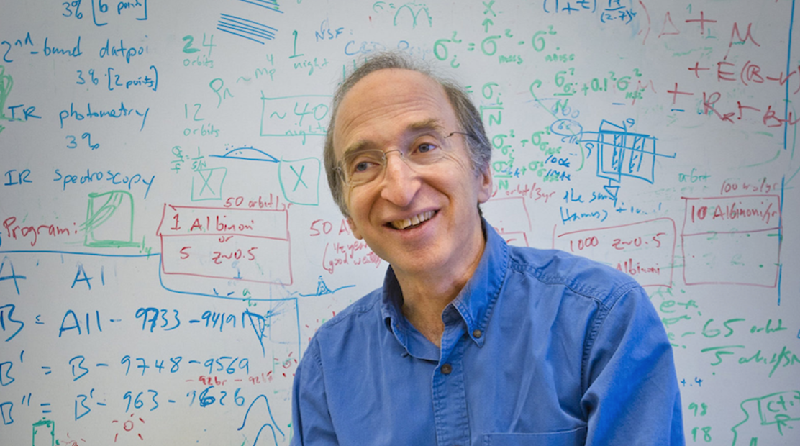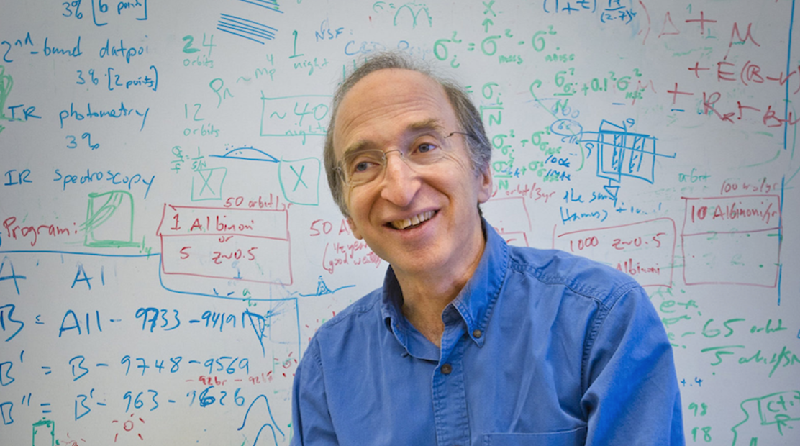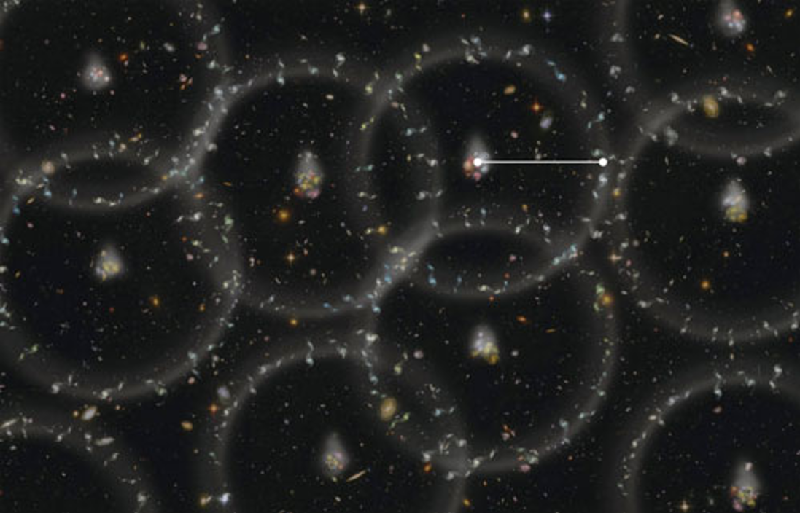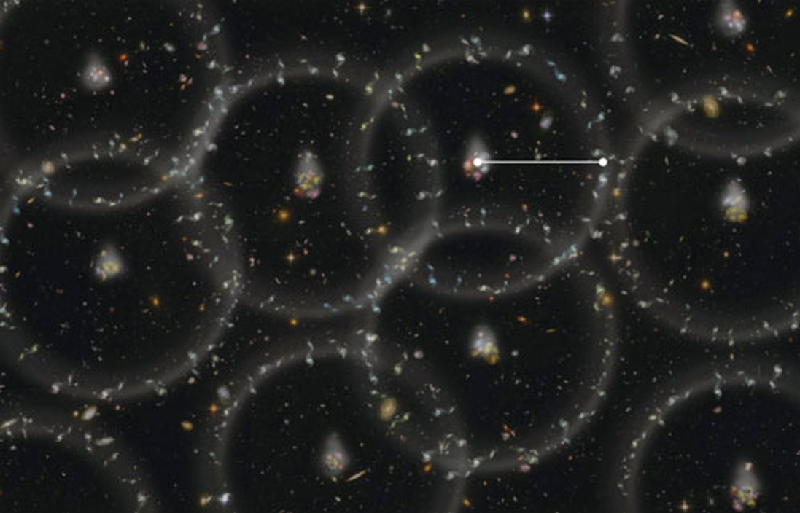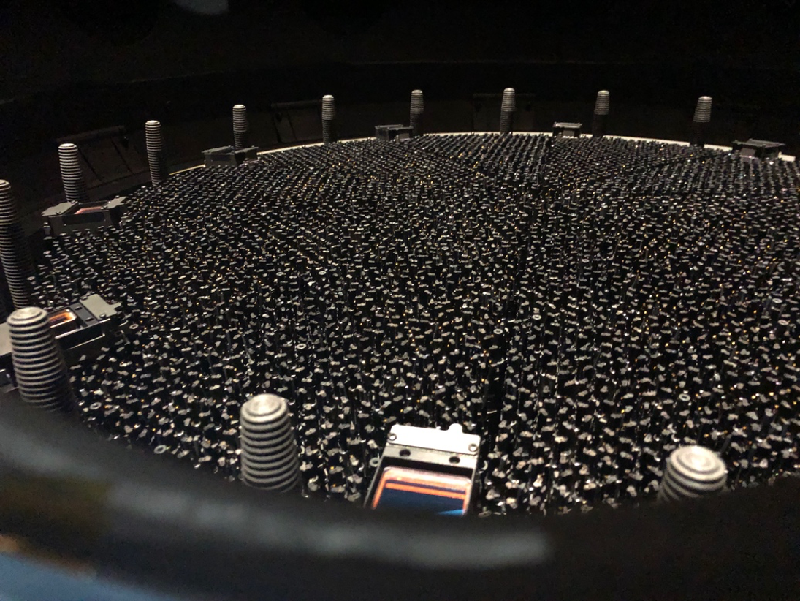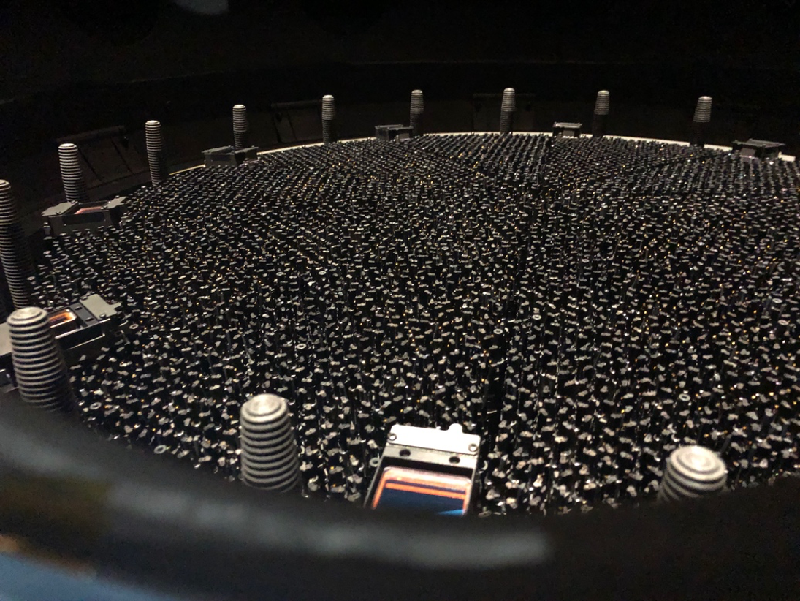Entering a New Era of Dark Energy Cosmology
In 1998, Saul Perlmutter was leading one of the two teams that discovered that the expansion of the Universe is accelerating. The finding stunned the scientific world, as most expectations were that the gravitational attraction of matter to other matter would slow down the expansion. Instead, a repulsive and enigmatic force—later called dark energy—appeared to be pushing the Universe apart.
Perlmutter, an astrophysicist at the Lawrence Berkeley National Lab and the University of California, Berkeley, eventually shared the physics Nobel Prize for the discovery. In response to the results, he turned to theorists in search of explanations. “Very quickly, we realized that to distinguish between competing theories, we would need to measure the expansion history of the Universe with at least 20 times the precision achievable at that time,” said Perlmutter at the Cosmic Controversies conference in Chicago in October.
Despite intense research efforts over the past two decades, cosmologists haven’t made much progress on understanding the nature of dark energy. The lack of progress may seem frustrating, “but it’s the absolute wrong time to feel depressed,” said Perlmutter, because the kinds of observations that he and others wanted 20 years ago are finally becoming possible. “The first experiments achieving the new level of precision are just about to turn on,” he said.
The first of the new generation of experiments to kick off will be the Dark Energy Spectroscopy Instrument (DESI), installed at the Mayall telescope on top of Kitt Peak in Arizona. DESI is currently being tested and is expected to start collecting scientific data next month. Other experiments, some ground-based and some on satellites, will begin in the next few years. The new observations will use several different, complementary techniques that cosmologists hope will provide new clues about the nature of dark energy.
DESI: Industrial-Scale Galaxy Observations
There are several ways to probe the Universe’s expansion. The most established method is the one famously used by Perlmutter and others in the 1990s. It relies on type Ia supernovae, thermonuclear explosions of white dwarfs that are visible even in galaxies ten billion light years away. Since the intrinsic brightness of this type of supernova is known, these events serve as “standard candles”: the brightness observed on Earth can be used to calculate their distances. Astronomers can also determine the speed with which a supernova is moving away from us by measuring its redshift, the change in wavelength of spectral features caused by the Doppler effect. The redshift provides the cosmic time at which we are seeing the explosion, since objects that are receding faster are farther away in both space and time than ones receding more slowly. By measuring the distances of many supernovae as a function of their redshift, researchers can put together the expansion history of the Universe.
DESI will use a different method, based on measuring the large-scale distribution of galaxies. This distribution retains the signatures of a phenomenon known as baryon acoustic oscillations (BAOs). BAOs were produced by acoustic waves in the hot, primordial plasma making up the early Universe. These waves froze into place about 380,000 years after the big bang, when the plasma’s electrons and protons became bound into neutral atoms. This freezing ultimately resulted in subtle, periodic oscillations in the density of galaxies—pick a galaxy, and you are slightly more likely to find other galaxies at a specific distance away from it, a distance called the acoustic scale.
Since the acoustic scale at the freeze-out time can be calculated from first principles, “It’s like having a reference yardstick imprinted in the Universe,” says DESI director Michael Levi. The acoustic scale increased as the Universe expanded, so that it is now almost half a billion light years. Researchers can follow how this yardstick changed with time by studying galaxies at a range of redshifts.
Levi says that using BAOs to determine the Universe’s expansion history is less prone to systematic errors than interpreting supernova measurements, which requires detailed modeling of stellar explosions. Measuring the acoustic scale, however, is anything but straightforward. To measure it precisely, one must observe large numbers of galaxies across billions of light years. Previous BAO surveys mapped about 2.5 million galaxies. DESI will surpass the precision of those surveys by mapping over 35 million galaxies and 2.4 million quasars—extremely bright and distant galactic nuclei. From such maps, DESI will reconstruct the last 11 billion years of the Universe’s expansion. “It’s like taking a 3D MRI scan of the Universe,” says Levi.
DESI will be able to measure such a large number of objects thanks to robotic technology. On the focal plane of the telescope, 5000 optical fibers will each gather light from one galaxy and send the light to a spectrometer, which will provide the galaxy’s redshift. Every 20 minutes, the 5000 robotic positioners will realign the fiber ends, pointing them at a new set of galaxies and cycling through over 100,000 galaxies every night. To prepare the ground for DESI, three previous surveys have observed one third of the sky, collecting images of over one billion galaxies, from which the most promising targets for DESI were selected. These data are collected in a publicly available online Sky Viewer.
DESI opened its eyes to the night sky in October 2019, and its scientists and engineers have been testing and calibrating the instrument. “We are still wrapping our heads around the complexity of this machine,” says Levi. “It’s like using robots to control the most complex Alvin Ailey choreography tens of times every night.”
More Ways to Measure Dark Energy
Beyond supernovae and BAOs, there are two other important techniques for studying dark energy. One is counting galaxy clusters—the clusters’ abundance varies with time depending on the cosmic mix of matter and dark energy. The other is weak lensing measurements, which map out the distribution of dark matter based on its subtle warping of spacetime and the resulting distortions of observed galaxies’ shapes and positions. Cluster counts and weak lensing—both measured as a function of redshift—will reveal how the accelerated expansion has changed the growth of structures of dark and visible matter.
“People used to fight over which of the four techniques is the best one,” says cosmologist Andreas Albrecht of the University of California, Davis. “Today we believe that the combination of different techniques is much more powerful than each individual technique.” Mark Kamionkowski, a theoretical physicist at Johns Hopkins University in Baltimore, agrees and refers to a famous South Asian parable. “If we focused on one observable only, we’d be like one of those six blind men trying to understand what an elephant is by touching just one of its parts.”
Following this philosophy, upcoming facilities include a variety of experiments that will exploit the full spectrum of dark energy observables. The European Space Agency will launch Euclid in 2022, and NASA plans to launch WFIRST in 2025. Between these two satellites, all four techniques will be carried out with high resolution from space. On the ground, the next big thing is the Large-aperture Synoptic Survey Telescope, a 6.5-m optical telescope expected to be operational in 2022. Although it won’t have DESI’s spectroscopic abilities, it will be able to see many more faint objects than any existing surveys, peering deeper into the Universe’s past.
Better Interactions with Data and between Scientists
Perlmutter’s optimism is not only motivated by the new measurement technology but also by dramatic improvements in the way researchers handle data. He cited key progress in several areas: Researchers have gotten better at understanding how random and systematic errors affect experiments; machine-learning tools have been increasingly applied to the analysis of big data; and advances in so-called blinding techniques have allowed researchers to better prevent bias from affecting their data processing.
There have also been important “sociological changes”—collaborations are increasingly adopting open-science philosophies, sharing all of their data publicly in real time. Astrophysicist Wendy Freedman of the University of Chicago said that many young researchers are now entering the dark energy arena, coming from other areas, like particle physics, and bringing new techniques. “These are times when we get a fertile cross-pollination of ideas from different fields,” she said.
Albrecht marveled at the changes over the last few decades. “When I entered the field, there were many big questions and no way to answer them. The transformation of cosmology into a precision science has been truly exhilarating,” he said. While Perlmutter admitted that there is no guarantee that the new level of precision will be sufficient to see something new, “a breakthrough feels like a natural thing to occur soon,” he said.
–Matteo Rini
Matteo Rini is the Deputy Editor of Physics.






